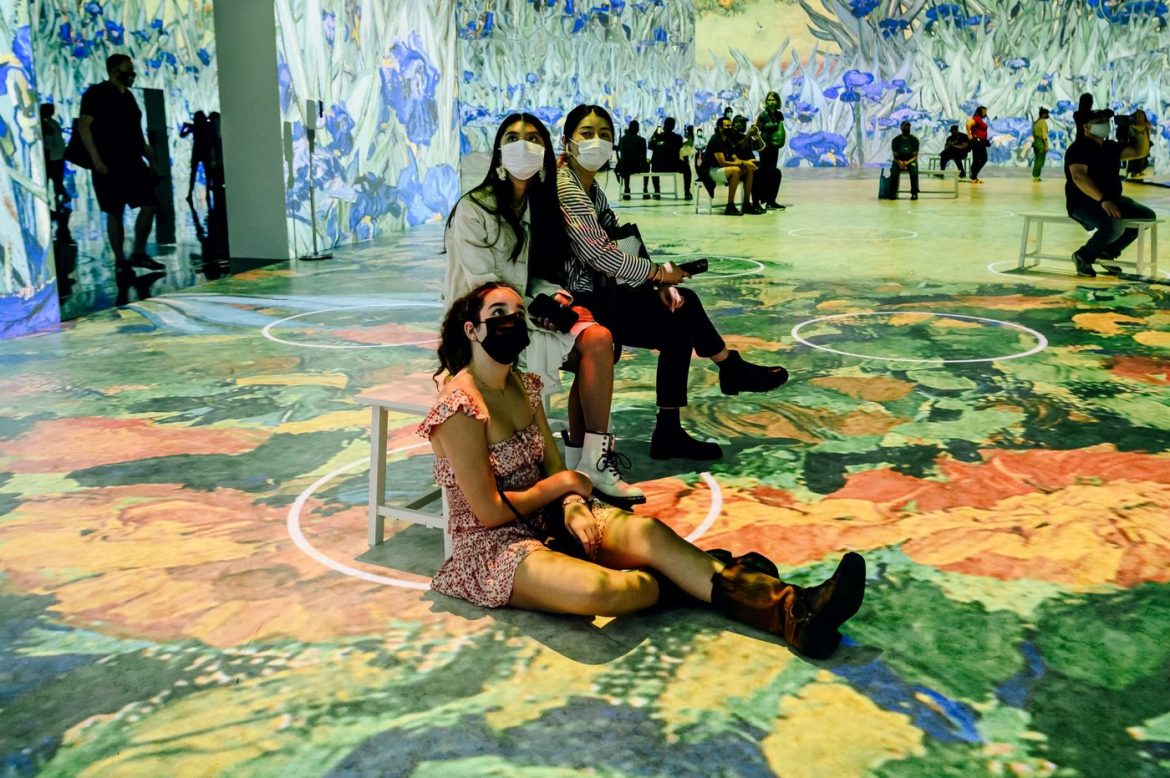How immersive exhibits are making art more accessible today
Photo Credit: Nina Westervelt
By Claudia Doyle
On May 1, 2020, Toronto became the first city in Canada to host the Immersive Van Gogh Exhibit, a much anticipated immersive experience that has already been hosted in 19 other cities in the United States. On their website, the exhibit is described as 600,000 cubic feet of stunning projection that brings Vincent van Gogh’s artwork to life and offers viewers the chance to see the brushstrokes, detail, and colour of his work from a new perspective.” The success of the exhibit has been undeniable, and it has paved the way for two more galleries that have recently opened in Toronto: Immersive Klimt and Beyond Monet.
I had the opportunity to see the Immersive Van Gogh Exhibit in August of 2020. Considering how many people were posting about it on social media, I went in with high expectations. Unfortunately, although the projections are supposedly tailored to perfectly suit its venue (the Old Toronto Star Building), the experience was a little underwhelming. The exhibit itself was only one large room, and even though visitors were free to walk around or wait their turn to stand on a higher viewing deck, there was little else to do. The projections were actually a video on loop, which lasted about 20 minutes. I couldn’t help but compare the price of admission to the length of the video: almost 30 dollars to get in, and this was a student discount price. Peak hour tickets can cost up to 50 dollars, and there are VIP options that cost even more.
Of course, nothing can beat seeing Van Gogh’s stunning impasto technique in its original glory. Although the video did a good job of creating very interesting compositions of different Van Gogh pieces, this new medium for displaying art does not do the texture and brushstrokes of the paintings justice. However, I soon realized that this kind of gallery is a great step towards making art more accessible to the public. The projections feature paintings like The Potato Eaters (1885), which is at the Van Gogh Museum in Amsterdam. They also feature one of Van Gogh’s most famous paintings, Starry Night (1889), which is at the Museum of Modern Art in New York. Sunflowers (1888), another popular piece, is at the National Gallery in London. At the Immersive Van Gogh Exhibit, visitors are introduced to each of these pieces without having to travel to three different countries to see them.
Especially now that travelling has become more difficult during the COVID-19 pandemic, accessibility in the form of immersive galleries has become a great way to get people interested in art. When flights were cancelled and art galleries were closed, the Immersive Van Gogh Experience was able to adapt and let viewers drive in to enjoy the show from their cars. Furthermore, the use of technology to make art more interesting to newcomers is quite ingenious. While projections on a wall may not be a substitute for seeing original masterpieces, they are a great place to start, and the immersive galleries in Toronto are a welcome new addition to this city’s art scene.




